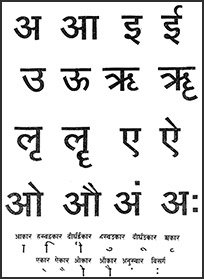Samdashta, Saṃdaṣṭa: 6 definitions
Introduction:
Samdashta means something in Hinduism, Sanskrit. If you want to know the exact meaning, history, etymology or English translation of this term then check out the descriptions on this page. Add your comment or reference to a book if you want to contribute to this summary article.
The Sanskrit term Saṃdaṣṭa can be transliterated into English as Samdasta or Samdashta, using the IAST transliteration scheme (?).
In Hinduism
Vyakarana (Sanskrit grammar)
Source: Wikisource: A dictionary of Sanskrit grammarSaṃdaṣṭa (संदष्ट).—A fault of pronunciation when the constituent letters of a word are uttered with the teeth kept close together. Kaiyata has explained the word as वर्धित (vardhita).

Vyakarana (व्याकरण, vyākaraṇa) refers to Sanskrit grammar and represents one of the six additional sciences (vedanga) to be studied along with the Vedas. Vyakarana concerns itself with the rules of Sanskrit grammar and linguistic analysis in order to establish the correct context of words and sentences.
Languages of India and abroad
Sanskrit dictionary
Source: DDSA: The practical Sanskrit-English dictionarySaṃdaṣṭa (संदष्ट).—p. p.
1) Bitten.
2) Pressed closely together, crushed; संदष्टकुसुमशयनानि (saṃdaṣṭakusumaśayanāni) (gātrāṇi) Ś.3.17.
3) Nipped; pinched.
-ṣṭam A particular fault in pronunciation.
Source: Cologne Digital Sanskrit Dictionaries: Cappeller Sanskrit-English DictionarySaṃdaṣṭa (संदष्ट).—[adjective] bitten, pressed (together).
Source: Cologne Digital Sanskrit Dictionaries: Monier-Williams Sanskrit-English Dictionary1) Saṃdaṣṭa (संदष्ट):—[=saṃ-daṣṭa] [from saṃ-daṃś] mfn. bitten, compressed, pressed closely together, pinched, nipped, [Mahābhārata; Kāvya literature] etc.
2) [v.s. ...] n. a [particular] fault in pronunciation (arising from keeping the teeth too close together), [Ṛgveda-prātiśākhya; Patañjali]
Source: DDSA: Paia-sadda-mahannavo; a comprehensive Prakrit Hindi dictionary (S)Saṃdaṣṭa (संदष्ट) in the Sanskrit language is related to the Prakrit word: Saṃdaṭṭa.
[Sanskrit to German]
Sanskrit, also spelled संस्कृतम् (saṃskṛtam), is an ancient language of India commonly seen as the grandmother of the Indo-European language family (even English!). Closely allied with Prakrit and Pali, Sanskrit is more exhaustive in both grammar and terms and has the most extensive collection of literature in the world, greatly surpassing its sister-languages Greek and Latin.
See also (Relevant definitions)
Starts with: Samdashtadantacchada, Samdashtadhara, Samdashtaka, Samdashtakusumashayana, Samdashtata, Samdashtaushtha, Samdashtayamaka, Sandashta.
Ends with: Abhisamdashta, Sandashta.
Full-text: Samdashtata, Samdashtadantacchada, Samdashtakusumashayana, Samdashtadhara, Samdashtaushtha, Samdashtaka, Samdashtayamaka, Abhisamdashta, Samdatta, Damsh, Vringana, Sandashta, Damshita.
Relevant text
No search results for Samdashta, Sam-dashta, Saṃ-daṣṭa, Sam-dasta, Saṃdaṣṭa, Samdasta; (plurals include: Samdashtas, dashtas, daṣṭas, dastas, Saṃdaṣṭas, Samdastas) in any book or story.